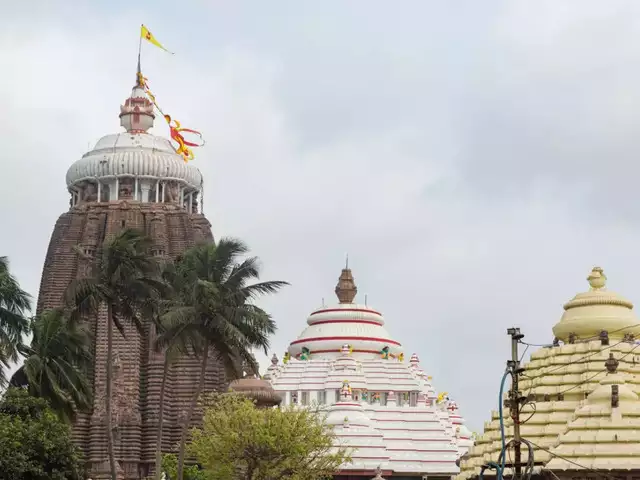Table of Contents
Table of Contents
- Introduction
- Historical Background
- Importance of the Ratna Bhandar
- The 2024 Opening
- Committee and Supervision
The Jagannath Temple in Puri, Odisha, is not just a place of worship; it is a beacon of India’s spiritual and cultural heritage. Dedicated to Lord Jagannath, an avatar of Lord Vishnu, the temple is an architectural marvel and a hub of religious fervor. Among its numerous facets, the Ratna Bhandar, or the Treasury of Jewels, stands out as a symbol of the temple’s opulence and historical significance. This year, the Ratna Bhandar will be opened for an audit and inventory under the supervision of a retired High Court judge, an event that has captured the attention of devotees and historians alike.
The history of the Jagannath Temple dates back to the 12th century, when it was built by King Anantavarman Chodaganga Deva. Over the centuries, the temple has not only been a spiritual center but also a repository of immense wealth, donated by kings, emperors, and devotees. The Ratna Bhandar, located near the Jagamohana of the temple, is believed to house countless treasures, including gold and silver ornaments, gems, and other precious artifacts. The last comprehensive inventory of the Ratna Bhandar was conducted in 1978, revealing 454 gold articles weighing 128.380 kg and 293 silver items weighing 221.530 kg. These findings underscore the immense cultural and religious significance of the Jagannath Temple.
The upcoming opening of the Ratna Bhandar on July 14, 2024, is a highly anticipated event. The inventory process will be overseen by a 16-member committee led by retired High Court judge Biswanath Rath. The committee’s role is to ensure transparency, accuracy, and the safety of both the participants and the artifacts. Given the potential hazards of opening an ancient vault, several safety measures are in place. The involvement of the snake helpline is a unique precaution due to the possibility of snakes inside the vault. Additionally, a team of doctors will be on standby to address any medical emergencies.

The inventory process involves several meticulous steps. Upon opening the Ratna Bhandar, a team of goldsmiths and meteorologists will assist in identifying and cataloging the ornaments. The treasures will be examined for their nature, carat, and condition. This process is expected to be detailed and systematic, ensuring every item is accounted for and documented. One of the modern approaches to this inventory is digital cataloguing, which involves creating a digital record of each item, supported by videography to ensure transparent and accessible documentation.
Opening the Ratna Bhandar, however, is not without its challenges. Potential issues include the condition of the artifacts, possible water damage, and the presence of pests. The committee has prepared measures to mitigate these risks, including thorough inspections and precautions to handle any unexpected situations. This careful approach is necessary to preserve the integrity of the treasures and the sanctity of the Jagannath Temple.
The treasures of the Ratna Bhandar hold immense historical value. Previous inventories have unveiled a wealth of items, including gold and silver ornaments, coins, and valuable gems. These treasures are not only significant for their monetary value but also for their historical and cultural importance. Donations from various dynasties and rulers have enriched the Ratna Bhandar, making it a repository of history and devotion. The opening of the Ratna Bhandar has generated significant public interest. While the inventory process is underway, devotees will still be able to visit the temple, albeit with some restrictions. Efforts are being made to ensure that the temple remains accessible to visitors, allowing them to witness this historic event from a distance.

The findings from the 2024 inventory are expected to add to the temple’s legacy. These discoveries will offer insights into the temple’s history and the devotion of its followers. The long-term benefits include better preservation and understanding of the artifacts, contributing to the temple’s cultural and spiritual heritage. The Shri Jagannath Temple Administration plays a pivotal role in this process. Their responsibilities include safeguarding the treasures, managing the logistics of the inventory, and planning for the future of the Ratna Bhandar. Their efforts are crucial in maintaining the temple’s sanctity and legacy.
Preserving the treasures of the Ratna Bhandar is vital for maintaining the temple’s cultural heritage. Efforts are being made to ensure that the artifacts are protected and documented accurately. This preservation is essential for future generations to appreciate and understand the temple’s rich history. The mysteries surrounding the Jagannath Temple and its Ratna Bhandar add to its allure. Legends speak of divine interventions and miraculous events associated with the temple, further enhancing its spiritual aura. The temple’s rituals and traditions, steeped in centuries-old customs, continue to fascinate and inspire devotees from around the world.
In conclusion, the opening of the Ratna Bhandar in 2024 is a momentous event for the Jagannath Temple and its devotees. It symbolizes a bridge between the past and the present, offering a glimpse into the temple’s storied history. As the inventory unfolds, it promises to reveal and preserve the divine opulence that has been safeguarded for centuries. The Jagannath Temple, with its rich legacy and enduring mysteries, continues to be a beacon of spiritual and cultural heritage.




Leave a Reply